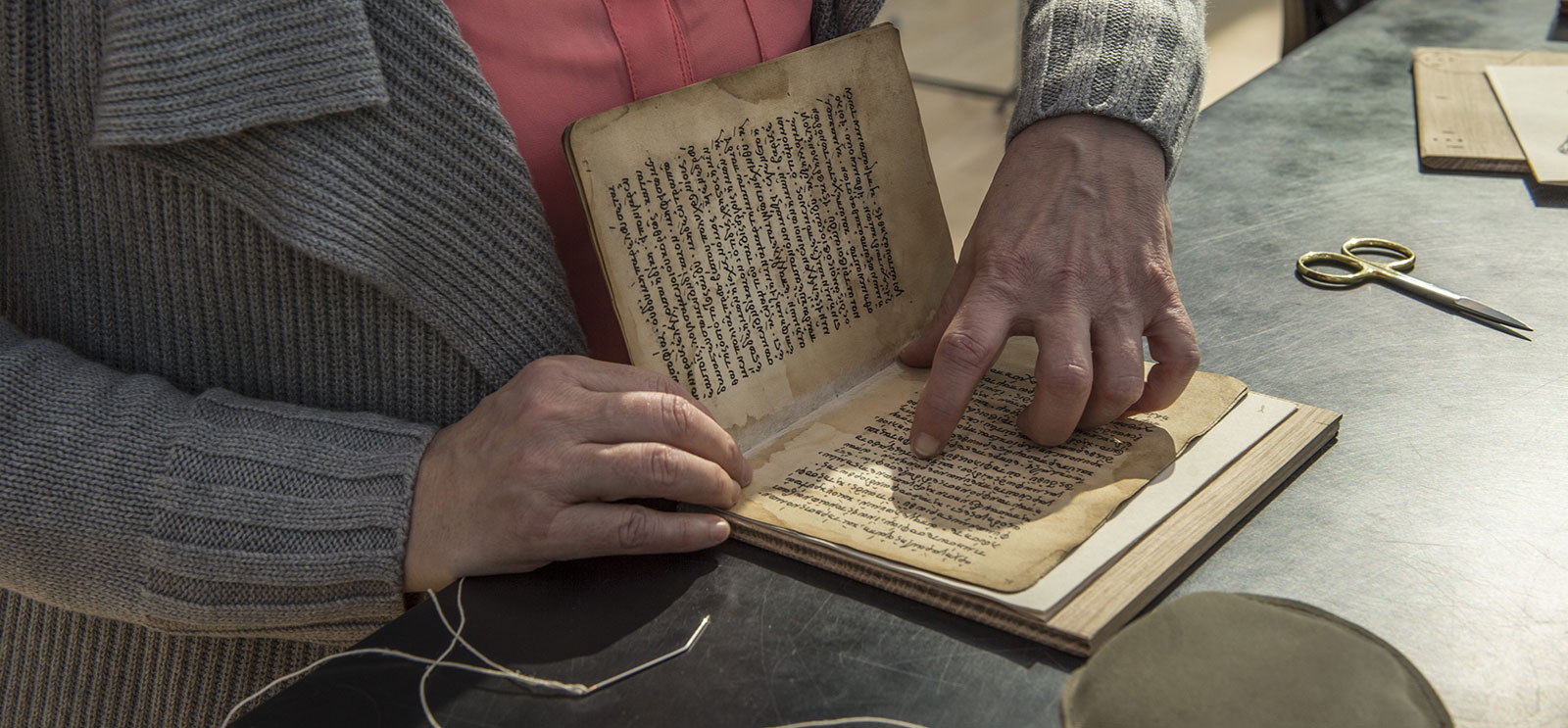
(Photography by Robert Kozloff)
A UChicago Library restoration project rescues a 500-year-old manuscript.
“This is something very few conservators will get to do,” says Ann Lindsey, head of conservation at the University of Chicago Library, looking at the yellowed manuscript she’s spent much of the winter restoring. “Because if you find a binding from this period that is in any kind of decent shape, you leave it alone. It’s lasted 500 years without you.”
But this book, an Orthodox text written in Greek, was not going to last much longer. A rebinding from the late 19th or early 20th century had left it battered: pages trimmed and uneven, its spine cut, its original sewing gone, glue deteriorating the paper. Says Lindsey: “Not only was the book failing—what wasn’t failing was damaging it.”
Called the John Adam Service Book, it is one of the last few manuscripts in the Library’s Goodspeed Collection to be digitized online. Not much is known about the book before UChicago theologian Edgar Goodspeed, DB 1897, PhD 1898, purchased it for the University in 1929 or 1930. It is an example of a Festal Menaion, an abridged version of a 12-volume text laying out the canons and hymns for the Orthodox liturgical calendar’s fixed-date feasts. Examining watermarks on the pages—there are at least four, indicating four different paper manufacturers—Special Collections digitization manager Judith Dartt, AM’06, estimates the book was produced in 16th-century Greece. Drawings in the margins dated 1852 and 1856 were signed by someone calling himself John Adam (hence the book’s name), the nephew of a priest living near the Macedonian border.
Using historically sympathetic materials, Lindsey is restoring the manuscript to its original binding in the Greek tradition—a way of stitching and fastening books together, distinct from Western tradition. (Shadows of the original sewing marks persist at the back of some pages.) She rebuilt folios from individual leaves and lathed a pair of cover boards from oak; later she will sheathe them in goatskin leather, which she’ll decorate with a typical Greek pattern. When the book is finished, it will return to the shelves at Special Collections to be read and studied.
